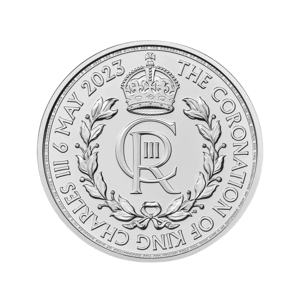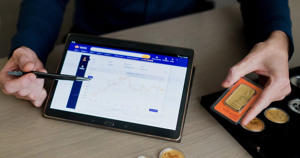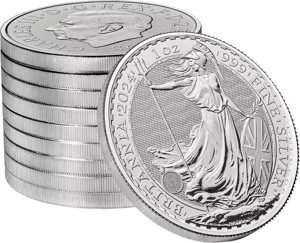Tavex uses cookies to ensure website functionality and improve your user experience. Collecting data from cookies helps us provide the best experience for you, keeps your account secure and allows us to personalise advert content. You can find out more in our cookie policy.
Please select what cookies you allow us to use
Cookies are small files of letters and digits downloaded and saved on your computer or another device (for instance, a mobile phone, a tablet) and saved in your browser while you visit a website. They can be used to track the pages you visit on the website, save the information you enter or remember your preferences such as language settings as long as you’re browsing the website.
| Cookie name | Cookie description | Cookie duration |
|---|---|---|
| tavex_cookie_consent | Stores cookie consent options selected | 60 weeks |
| tavex_customer | Tavex customer ID | 30 days |
| wp-wpml_current_language | Stores selected language | 1 day |
| AWSALB | AWS ALB sticky session cookie | 6 days |
| AWSALBCORS | AWS ALB sticky session cookie | 6 days |
| NO_CACHE | Used to disable page caching | 1 day |
| PHPSESSID | Identifier for PHP session | Session |
| latest_news | Helps to keep notifications relevant by storing the latest news shown | 29 days |
| latest_news_flash | Helps to keep notifications relevant by storing the latest news shown | 29 days |
| tavex_recently_viewed_products | List of recently viewed products | 1 day |
| tavex_compare_amount | Number of items in product comparison view | 1 day |
| Cookie name | Cookie description | Cookie duration |
|---|---|---|
| chart-widget-tab-*-*-* | Remembers last chart options (i.e currency, time period, etc) | 29 days |
| archive_layout | Stores selected product layout on category pages | 1 day |
| Cookie name | Cookie description | Cookie duration |
|---|---|---|
| cartstack.com-* | Used for tracking abandoned shopping carts | 1 year |
| _omappvp | Used by OptinMonster for determining new vs. returning visitors. Expires in 11 years | 11 years |
| _omappvs | Used by OptinMonster for determining when a new visitor becomes a returning visitor | Session |
| om* | Used by OptinMonster to track interactions with campaigns | Persistent |
| Cookie name | Cookie description | Cookie duration |
|---|---|---|
| _ga | Used to distinguish users | 2 years |
| _gid | Used to distinguish users | 24 hours |
| _ga_* | Used to persist session state | 2 years |
| _gac_* | Contains campaign related information | 90 days |
| _gat_gtag_* | Used to throttle request rate | 1 minute |
| _fbc | Facebook advertisement cookie | 2 years |
| _fbp | Facebook cookie for distinguishing unique users | 2 years |
How to Check the Authenticity of Silver Bullion

In the world of precious metals, silver bullion holds a special place for investors. With its enduring value and versatility, silver bullion is often a sought-after asset. However, determining the authenticity of silver bullion is paramount to ensure that you’re getting what you pay for.
In this guide, we will walk you through the essential steps to verify the authenticity of silver bullion, protecting your investments and interests.
Silver Bullion

Silver bullion, often in the form of bars or coins, has been a popular investment choice for centuries. However, the market is not without its share of counterfeit products. To safeguard your investment and ensure you are purchasing genuine silver bullion, it’s crucial to know how to verify its authenticity.
Before delving into authenticity checks, let’s understand what silver bullion is. Silver bullion is a form of pure silver, typically containing 99.9% silver content. It is produced by various mints and refineries worldwide, and each piece is stamped with specific markings to denote its purity and origin.
How to Authentify Your Silver Bullion

The value of silver bullion lies in its purity and weight. Counterfeit or impure silver can result in significant financial losses. Additionally, counterfeit silver bullion can tarnish the reputation of legitimate dealers and mints. Hence, verifying authenticity is crucial.
Physical Inspection
1) Weight and Dimensions
Authentic silver bullion should match its specified weight and dimensions.
Use a precise scale and calipers to measure these attributes, comparing them with the manufacturer’s specifications
For example, if your silver bullion coin is meant to contain 1 troy ounce of silver make sure your coin weighs 31.1g on a scale.
2) Purity Marks
Look for purity marks such as “999” or “99.9%.” These marks indicate that the silver bullion is high purity of fine silver.
3) Hallmarks
Examine the piece for hallmarks that identify the mint or manufacturer on your silver bullion bars and silver bullion coins. Research these hallmarks to ensure they match legitimate producers.
Magnet Test

Silver is not magnetic. Place a strong magnet near the bullion to check for attraction. If it’s magnetic, it’s not authentic silver. This test is a quick and easy way to eliminate most counterfeit silver bullion.
Ice Test
Silver has excellent thermal conductivity. Place an ice cube on the bullion; it should melt quickly due to the metal’s high thermal conductivity.
Acid Test
Use a silver testing kit with acid to determine if the bullion reacts.
Authentic silver will show minimal or no reaction to the acid
Be cautious when performing this test, as it can damage the bullion’s surface if not done correctly.
Sound Test
Authentic silver produces a distinct, melodious ring when tapped with another piece of metal.
This sound is often referred to as the “ping test”
Counterfeit pieces may produce a dull or flat sound. Conducting this test requires a keen ear and some practice, but it can be a valuable tool in detecting fake silver.
Professional Authentication Services

Consider professional authentication services for valuable silver bullion. Experts use advanced techniques and equipment to verify authenticity. At Tavex, we offer free consultations where we can test the authenticity of your product to check it is real silver. Book your free consultation here.
Purchase silver bullion from reputable dealers, mints, or established online platforms. Research and read reviews to ensure trustworthiness.
Common Silver Bullion Frauds

1) Counterfeiting
Counterfeit silver bullion often mimics the appearance but lacks the genuine silver content. Vigilance is crucial when inspecting bullion for counterfeit markings or irregularities in weight and dimensions.
2) Alloying
Some fraudsters mix silver with other metals to reduce costs. Verify purity to avoid alloyed bullion, which may tarnish or deteriorate over time. Investment grade silver should contain 99.99% pure silver as the base metal, unlike a product that is silver alloyed.
3) Plating
Be cautious of silver-plated items masquerading as solid silver bullion. Scrutinise the surface for signs of wear and inconsistencies. To take a look at this more closely, you could take a magnifying glass to get a more in detail look.
Key Takeaways
Ensuring the authenticity of your silver bullion is essential for your financial security. By following these guidelines and conducting thorough checks, you can confidently invest in silver bullion with peace of mind.
These steps will ensure your silver items are of high quality aligning with industry standards.
FAQs
1. Are there professional services for silver bullion authentication?
- Yes, many specialised services and experts can authenticate your silver bullion. At Tavex, we offer free consultations with a precious metal expert where you can check the authenticity of your silver bullion products. Book your free consultation here.
2. Can I trust online sellers for buying silver bullion?
- Yes, as long as you research and choose reputable online platforms with positive reviews and a strong track record. At Tavex, we offer silver from reputable mints and refineries such as The Royal Mint, ensuring high quality bullion. Explore our range of silver bullion here. Additionally, discover more about our renowned partners here.
3. How should I store my silver bullion?
- Store it in a secure, controlled environment, such as a safe or safety deposit box, to protect it from damage or theft. To learn more about this, read our guide on how to store silver bullion so it doesn’t tarnish here.



















